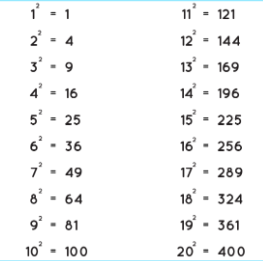Factors play a crucial role in various branches of mathematics, including number theory, algebra, and geometry. Grasping the concept of factors and their relationships with other mathematical ideas is essential for solving complex mathematical problems.
Introduction
A factor of a number is an integer that divides the number exactly, leaving no remainder. Factors are integral to many mathematical concepts, such as divisibility, prime numbers, greatest common divisors (GCD), and least common multiples (LCM). This article explores various aspects of factors, including their identification, classification, and practical applications.
What are Factors of a Number?
Factors of a number are integers that divide the number without leaving a remainder. Mathematically, if n is a number, then its factors are positive integers that divide n exactly. For example, the factors of 12 are 1, 2, 3, 4, 6, and 12.
Example: Factors of 12
- 12÷1=12 (factors: 1 and 12)
- 12÷2=6 (factors: 2 and 6)
- 12÷3=4 (factors: 3 and 4)
Classification of Factors
Factors can be classified into two main categories: prime factors and composite factors.
- Prime Factors: Prime factors are prime numbers that divide the given number exactly. For example, the prime factors of 12 are 2 and 3.
- Composite Factors: Composite factors are non-prime numbers that can be divided further into prime factors. For instance, 4 is a composite factor of 12 (since 4=2×2).
Also Check: Differential Equations
Factors of Prime Numbers
Prime numbers have only two factors: 1 and the number itself. Examples of prime numbers include 2, 3, 5, 7, 11, and 13. For instance, the factors of the prime number 13 are just 1 and 13.
Factors of Composite Numbers
Composite numbers have more than two factors. For example, the number 90 is a composite number. Its factors are 1, 2, 3, 5, 6, 9, 10, 15, 18, 30, 45, and 90.
Example: Factors of 90
- 90÷1=90 (factors: 1 and 90)
- 90÷2=455 (factors: 2 and 45)
- 90÷3=300 (factors: 3 and 30)
- 90÷5=18 (factors: 5 and 18)
- 90÷6=15 (factors: 6 and 15)
- 90÷9=10 (factors: 9 and 10)
Factors of Square Numbers
Square numbers result from multiplying an integer by itself. For example, 9 is the square of 3, and 16 is the square of 4. The factors of square numbers come in pairs. For instance, the factors of 36 (which is 6×66 \times 66×6) are 1, 2, 3, 4, 6, 9, 12, 18, and 36.

Also Check: Cubes from 1 to 50
Formulas Related to Factors
There are several mathematical formulas related to factors:
Number of Factors
The number of factors of a number can be found by counting the number of positive integers that divide the number evenly. The formula for finding the number of factors is
n = (a + 1) (b + 1) (c + 1) ... (x + 1)
where n is the number, a, b, c, ... x are the exponents in the prime factorization of the number.
Product of Factors
The product of all the factors of a number can be found using the formula:
P = n(x-1)
where n is the number, and x is the number of factors of the number.
Sum of Factors
The sum of all the factors of a number can be found using the formula:
S=(px+1-1)p-1
where n is the number, p is a prime factor of the number, and x is the exponent in the prime factorization of the number.
Applications of Factors
Factors are used in various mathematical applications, such as:
- Finding the GCD: The GCD of two numbers is the largest number that divides both numbers exactly.
- Finding the LCM: The LCM of two numbers is the smallest number divisible by both.
- Solving Equations: Factors are crucial in solving linear and quadratic equations.
- Geometry: Factors are used in geometric calculations, such as finding the dimensions of shapes.
Also Check: Discontinuity
How to Find Factors of a Number?
To find the factors of a number, you can use several methods:
- Factor Tree: Visual representation where you break down a number into its prime factors.
- Prime Factorization: Divide the number by its smallest prime factor repeatedly until you reach 1.
- Division Method: Divide the number by each integer starting from 1 up to the number itself. If the division is exact, the divisor is a factor.
Example: Prime Factorization of 12
- 12÷2=6
- 6÷2=3
- 3÷3=1
So, the prime factorization of 12 is 2×2×3
Frequently Asked Questions
The factors of 12 are 1, 2, 3, 4, 6, and 12.
The sum of the factors of 12 is 28.
The product of the factors of 12 is 144.
Factors of a number can be determined using methods such as a factor tree, prime factorization, or the division method.
A prime number is a positive integer greater than 1 that has exactly two positive divisors: 1 and itself.